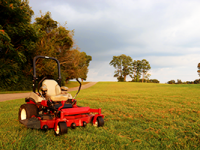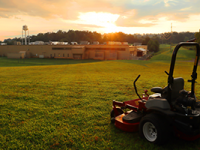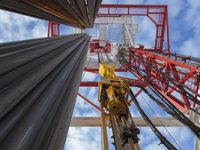OEM Design Engineer’s Guide to Specifying Hydraulic Cylinders
 In today’s industrial manufacturing environment, hydraulic cylinders are complex devices that incorporate a wide range of components available in a multitude of sizes, configurations and materials. When it comes to complex hydraulic systems, cylinder specification can be a balancing act for OEM design engineers — as each design factor influences one or more of the many other design details to be considered for the application.
In today’s industrial manufacturing environment, hydraulic cylinders are complex devices that incorporate a wide range of components available in a multitude of sizes, configurations and materials. When it comes to complex hydraulic systems, cylinder specification can be a balancing act for OEM design engineers — as each design factor influences one or more of the many other design details to be considered for the application.
A complicated process
Even though hydraulic system design guidelines like NFPA and ISO exist, many industries have developed their own. Certain cylinder manufacturers offer options that present a wide scope of performance capabilities for standard components, minimizing the need for customization. However, exceptions to this remain. Working with an experienced engineering manufacturer can help to navigate and expedite the design process.
In this blog, we’ll look at some of the many factors that should be considered when specifying hydraulic cylinders and how to simplify the process.
 To read all of the factors to consider when specifying hydraulic cylinders, download the white paper “The Art of Cylinder Specification”.
To read all of the factors to consider when specifying hydraulic cylinders, download the white paper “The Art of Cylinder Specification”.
What to consider when specifying hydraulic cylinders
Capacity
Medium-duty hydraulic systems with pressure capabilities of 1000 PSI are used in the majority of industrial applications. Some applications, such as hydraulic presses and automotive manufacturing require heavy-duty systems. Standard heavy-duty hydraulic cylinders can accommodate pressures as high as 3000 PSI. Load capabilities are relative to the full piston area (in square inches) when exposed to fluid pressure multiplied by the gauge pressure in PSI.
Stroking distance requirements
Pressure rating can be a concern with custom stroke distances above 10 feet (3.05m). To handle the load, rod diameter must be determined. A pressure rating on load in thrust (push mode) may need to be specified. Rod sag from horizontal applications may result in premature rod bearing wear. To optimize hydraulic system performance, a best practice is comparing the positive effects to any potential negatives.
Speed
 The definition of “excessive speed” can vary from one design engineer to another. As a good rule of thumb, standard hydraulic cylinder seals can easily handle speeds up to 3.28 feet (1 meter) per second. The tolerance threshold for standard cushions is roughly two thirds (2/3) of that speed. For higher speed applications, a standard low-friction seal is the better choice. But, what you gain in one aspect of performance, you lose in another. The greater the fluid velocity, the higher the fluid temperature, so when opting for speed increasing customizations, it is essential to consider the impact of higher temperatures on the entire hydraulic system. In some hydraulic systems, over-sized ports may eliminate escalated temperature concerns.
The definition of “excessive speed” can vary from one design engineer to another. As a good rule of thumb, standard hydraulic cylinder seals can easily handle speeds up to 3.28 feet (1 meter) per second. The tolerance threshold for standard cushions is roughly two thirds (2/3) of that speed. For higher speed applications, a standard low-friction seal is the better choice. But, what you gain in one aspect of performance, you lose in another. The greater the fluid velocity, the higher the fluid temperature, so when opting for speed increasing customizations, it is essential to consider the impact of higher temperatures on the entire hydraulic system. In some hydraulic systems, over-sized ports may eliminate escalated temperature concerns.
Temperature
Hydraulic cylinder systems using standard components can be designed to meet application temperatures as hot as 500°F (260°C) and as cold as -65°F (-54°C). But temperatures affect both the “hard” and “soft” design components of cylinders. Applications requiring temperature extremes at either or both ends of the temperature spectrum require extensive knowledge of the interdependence of individual components to achieve the best balance of short- and long-term performance expectations. For example, applications near the north or south poles will see a contraction of the seals and metal parts due to the extreme temperatures.
Mounting styles
There are basically three categories of mounting styles. Fixed and pivot styles can absorb forces on the cylinder’s centerline and typically include medium-duty and heavy-duty mounts to accommodate thrust or tension. A third category of fixed styles allows the entire cylinder to be supported by the mounting surface below the cylinder centerline, rather than absorbing forces solely along the centerline. Several standardized mounts are available within these categories. OEM design engineers can use these various mount offerings for a wide range of application requirements. NFPA Tie rod cylinders, which are used in the majority of industrial systems, can usually be mounted using a variety of standard mating configurations from trunnion-style heads and caps to extended tie rod cap and/or head end styles, flange style heads, side-lug and side-tapped styles, a range of spherical bearing configurations, and cap fixed clevis designs. Most mounting options are available for both single acting and double rod cylinders.
The goal of every mounting design is to allow the mount to absorb force, stabilize the system and optimize performance. Cap end mounts are recommended for rods loaded primarily in compression (push). A head end mount is recommended for rods loaded in tension (pull). The amount of tension or compression determines the piston rod diameter. The amount of pull or push determines the bore diameter. Other relevant factors to consider when selecting a mounting style include:
- Load
- Speed
- Cylinder motion (straight/fixed or pivot)
Every mounting type comes with benefits and limitations. For example, trunnions for pivot-mounted cylinders are incompatible with self-aligning bearings where the small bearing area is positioned at a distance from the trunnions and cylinder heads. Improper use of this type of configuration introduces bending forces that can over-stress the trunnion pins. Many performance expectations that appear to require atypical mounts can be accommodated by existing styles, sometimes with only slight modifications — facilitating replacement and reducing costs.
Cylinder bore size
 Bore size is related to operating pressure. The amount of push or pull force required is what determines the bore size needed. Earlier generations of steel and aluminum mill equipment often required the use of non-standard bore and rod sizes. Today, virtually every industrial requirement can be met with NFPA standard and/or ISO-compliant components.
Bore size is related to operating pressure. The amount of push or pull force required is what determines the bore size needed. Earlier generations of steel and aluminum mill equipment often required the use of non-standard bore and rod sizes. Today, virtually every industrial requirement can be met with NFPA standard and/or ISO-compliant components.
Piston rod size
OEM design engineers probably request customization of piston rod sizes more frequently than any other hydraulic cylinder component. What is not always considered is the simple fact that push or pull is never independent of stroke length. Just as a pushed rope holds a straight line only in relation to its length (the longer the rope, the more the rope curls), piston rods under compression or tension tend to diffuse force in non-linear directions. Specifying costly materials such as stainless steel or alloy steels for the rods themselves is unnecessary. In most extreme applications, chrome plating provides a high level of corrosion-resistance required to optimize system longevity.
Conclusion
In conclusion, hydraulic cylinder specification can be a time-consuming and complicated process. Partnering with an engineering manufacturer experienced in hydraulic system design, such as Parker Cylinder Division, early in the design process, an OEM design team can save time and money and ensure reliable system operation and long service life.
Continue reading
 Download the white paper “The Art of Cylinder Specification” to read all of the factors to consider when specifying hydraulic cylinders.
Download the white paper “The Art of Cylinder Specification” to read all of the factors to consider when specifying hydraulic cylinders.
 This blog was contributed by Jim Hauser, senior engineer, and Rade Knezevic, division sales manager, Parker Cylinder Division.
This blog was contributed by Jim Hauser, senior engineer, and Rade Knezevic, division sales manager, Parker Cylinder Division.

Related content
How VFD Technology on Hydraulic Power Units Helps Improve Performance | Case Study
How to Specify the Proper Sized Heat Exchanger for Your Hydraulic System
Source: Parker Feed





